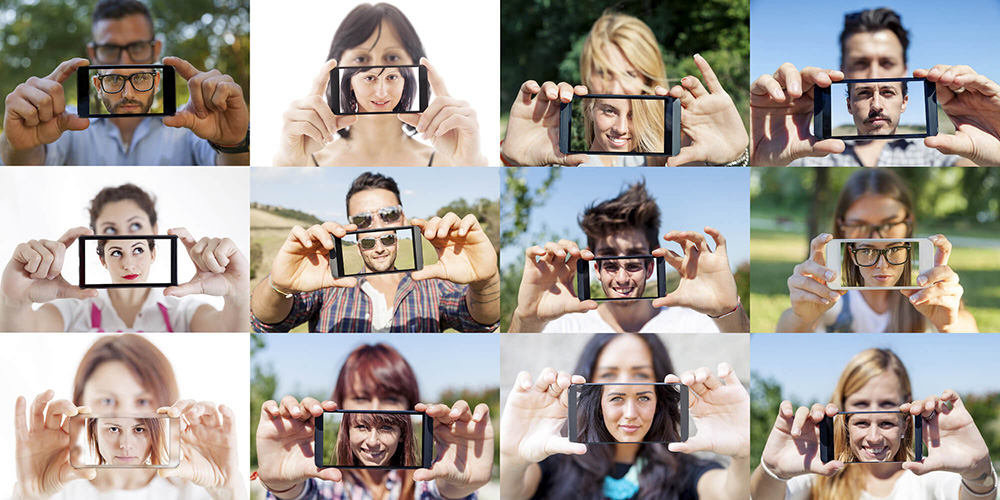A History of Camera Phones

It's pretty remarkable what you can do with the camera in your phone these days -- Sean Baker shot the stunning film Tangerine with only three iPhone 5S -- though with some help from some pro apps and a steadicam, and more recently Steven Soderbergh shot his psychological horror film Unsane in 4K with an iPhone 7 Pro.
But where did this all come from? What's changed that's allowed us to have a miniature, high-quality camera in our pocket at all times?
Humble BeginningsThe first patent recorded for a camera integrated into a phone was all the way back in 1956, but the first commercially available mobile phone that appeared with a built-in camera was in Japan, with a CCD-sensor camera being installed in several models marketed by now defunct mobile phone company J-Phone in the early 1990s. From here, more companies followed suit.
A few notable early examples of camera integration into mobile phones include the Olympus DELTIS VC-1100 in 1994 and, oddly enough, a combination PDA/videophone by Apple Computers (of all people) that included a digital camera. Neither of these broke into mainstream markets, and Japan's flagging economy through the 90s meant it was no longer the best market to test out ostentatious new tech developments, so 1997 efforts from companies like Sharp and Kyocera failed as well.
However, the tide began to turn in Japan around the end of the millennium, and by 2001 J-Phone has broken through with a massively popular camera phone, now using the more standard CMOS-sensor technology instead. Within a few years, this technology would spread worldwide.
UbiquityCamera phone technology was improving exponentially, and the world (and other cell phone manufacturers) were beginning to stand up and take notice. In the period between 2001 and 2005, camera phones went from technical curios for hobbyists and enthusiasts to utterly ubiquitous in the worldwide marketplace. In 2005, Nokia was now the largest single digital camera maker in the world, and more phones were being sold with digital cameras than those without.
So, what does this ubiquity mean? In terms of social impact, there have been a few major social shifts we've seen in the ensuing decade and a half of almost everyone having a phone take can photos or video; we've seen police brutality exposed on a scale it wasn't before, we've seen surreptitiously taken camera phone footage used to take down politicians and celebrities and other public figures, and we've seen the rise of the selfie.
Many have rightfully pointed out that using a camera to take a self portrait is hardly a new development, but the ease from which it can be done with a camera phone with a forward facing camera (a development that arrived with the advent of second generation smartphones) and its stereotypical "selfie pose" taking from above and to the side at a flattering angle -- and now you have something for people to get incredibly upset over.
High DefinitionHD cameras began appearing in mobile phones as early as 2010, and the first to really capitalize on the technology was Nokia's tragically underrated N8 Smartphone in April of that year. The N8, the first phone to run the powerful Symbian^3 OS, was fitted with a 12-megapixel, a 1/1.83" sensor size, and a Xenon flash. This made it not only the most powerful camera phone, but a camera phone that could handily compete in the consumer electronic digital camera market.
But, like a few of Nokia's efforts, the N8 was ahead of its time and was never released in North America.
It took five years for a camera of this power, which would turn out to be the assorted iPhone 5 models by Apple, to break into the mainstream of North American mobile phone culture.
The best camera in the world is never going to be a camera phone, if for no other reason than dedicated cameras don't have to worry about being phones or dedicated tiny supercomputers at the same time as being a good camera. But the trend of high-quality, high-definition camera phones being the norm on new phones that are being released has opened the door to more and more amateur photographers who previously may not have had access to have a high-performance camera. And when we lower those barriers of entry, sometimes we get really special -- like Tangerine.
--article by: Dan Stewart



